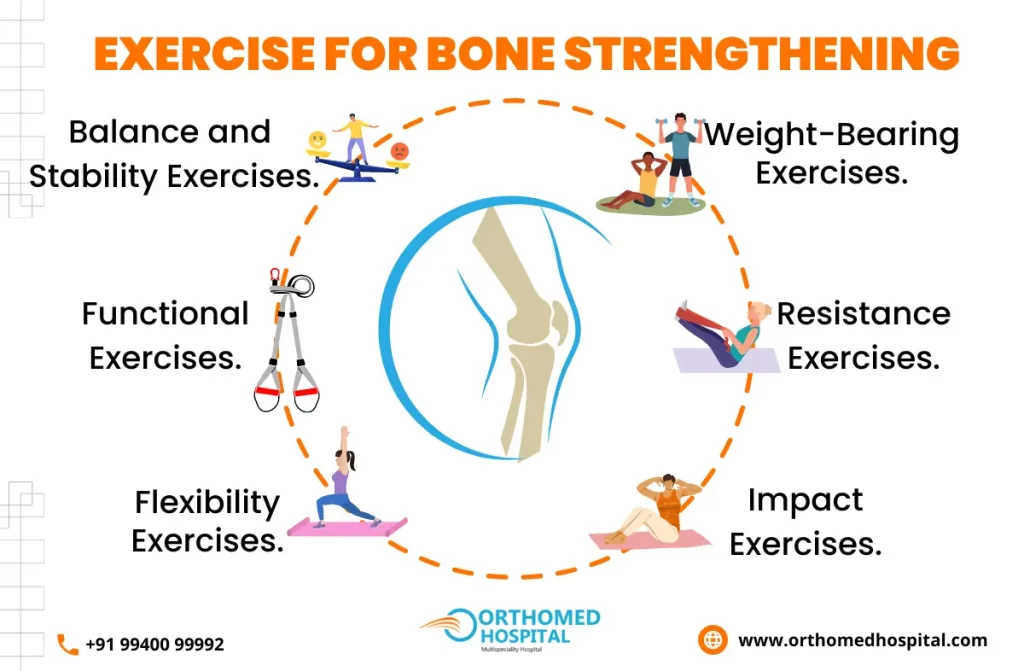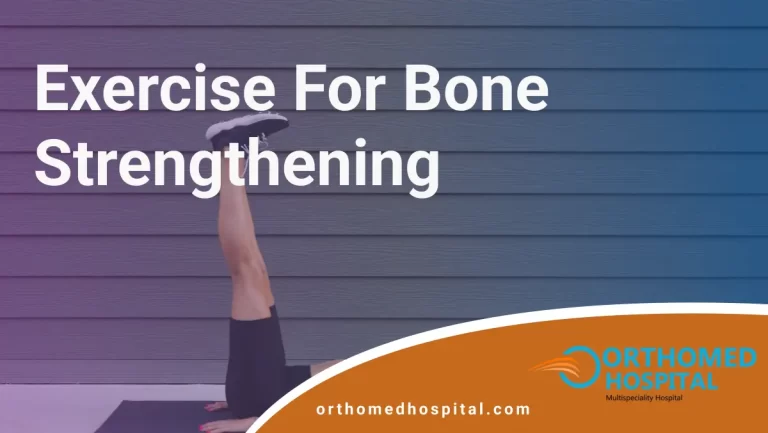Bone health is an essential aspect of overall well-being, as strong bones provide the framework for our bodies and support various bodily functions. Engaging in regular exercise for bone strengthening is crucial for maintaining bone density, preventing fractures, and promoting a healthier, more active lifestyle.
In this comprehensive guide, we’ll delve into the importance of bone health, the science behind bone-strengthening exercises, and provide a variety of exercises suitable for individuals of all ages and fitness levels.
Understanding Bone Health
Bones are living tissues that constantly undergo a process of remodeling. This process involves the breakdown of old bone tissue and the formation of new bone tissue, ensuring the maintenance of bone strength and integrity. However, as we age, this balance can be disrupted, leading to decreased bone density and an increased risk of fractures.

Benefits of Exercise for Bone Strengthening
Bone-strengthening exercises, also known as weight-bearing or resistance exercises, are activities that require your muscles to work against gravity. Engaging in exercise for bone strengthening can offer a multitude of benefits, including:
- Increased Bone Density: Weight-bearing exercises stimulate bone cells to create new tissue, leading to improved bone density and strength.
- Reduced Fracture Risk: Strong bones are more resilient and less prone to fractures, enhancing the overall quality of life, especially in older adults.
- Enhanced Muscle Strength: Many bone strengthening exercises engage multiple muscle groups, leading to improved muscle strength and coordination.
- Boosted Metabolism: This bone strengthening physical activity can increase lean muscle mass, which in turn can contribute to a higher metabolic rate and better weight management.
- Improved Balance and Posture: Muscle bone strengthening exercise helps enhance balance and promote better posture, reducing the risk of falls and related injuries.
Effective Bone-Strengthening Exercises
There are numerous bone-strengthening exercises but these are considered to be the most effective exercise for bone strengthening.
- Walking: A simple yet effective weight-bearing exercise, walking can be done almost anywhere. Aim for brisk walks for 30 minutes most days of the week.
- Jogging/Running: For those seeking higher-impact activities, jogging or running can be excellent bone-strengthening options. Start gradually and choose supportive footwear.
- Jumping Rope: This dynamic activity engages various muscle groups and provides a high-impact workout, improving bone density and cardiovascular fitness.
- Strength Training: These Incorporate resistance exercise for bone strengthening utilizing weights, resistance bands, or body weight. Exercises like squats, lunges, and push-ups are particularly effective.
- Dancing: Whether it’s ballroom, hip-hop, or Zumba, dancing is a fun way to engage in weight-bearing exercise while boosting your mood.
- Hiking: Take advantage of nature by hiking on uneven terrain. The varied surfaces and inclines challenge your bones and muscles in unique ways.
- Stair Climbing: Try using stairs instead of elevators whenever possible. Climbing stairs is a bone strengthening physical activity that targets your lower body muscles and bones.
- Yoga: Certain yoga poses, like downward dog and warrior poses, can provide gentle resistance and support bone health through controlled movements.
- Tai Chi: This ancient Chinese practice muscle bone strengthening exercise focuses on balance, flexibility, and slow, controlled movements, which can help enhance bone health.
Safety Considerations
While exercise for bone strengthening offers numerous benefits, safety should always be a priority. Here are some important considerations:
- Consult Your Healthcare Provider: If you have any pre-existing health conditions or concerns, consult your doctor before beginning a new exercise regimen.
- Proper Technique: Learning the correct form for each exercise is essential to prevent injuries. Consider working with a qualified fitness trainer, especially when starting strength training.
- Progress Gradually: If you’re new to bone strengthening physical activity or returning after a hiatus, start slowly and gradually increase intensity and duration to avoid overexertion.
- Listen to Your Body: Pay attention to how your body responds to muscle bone strengthening exercise. If you experience pain, discomfort, or excessive fatigue, stop and rest.
Conclusion
To conclude, exercise for bone strengthening is a valuable investment in your long-term health. By incorporating these activities into your routine, you can enhance bone density, reduce fracture risk, and enjoy a more active and fulfilling lifestyle. Remember to prioritize safety, seek professional guidance from the experts of Orthomed Hospital, and celebrate the progress you make on your journey to stronger bones and a healthier you.


